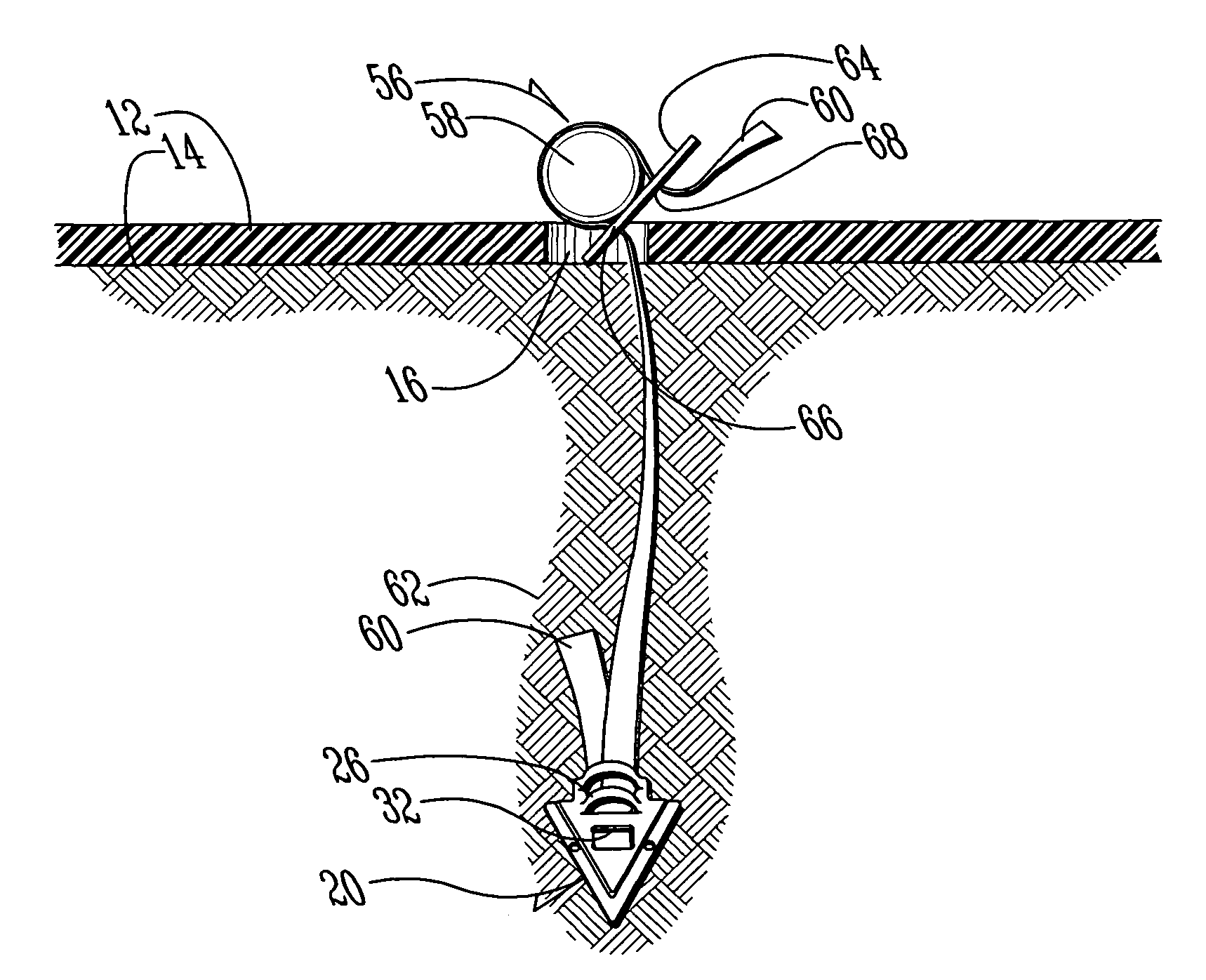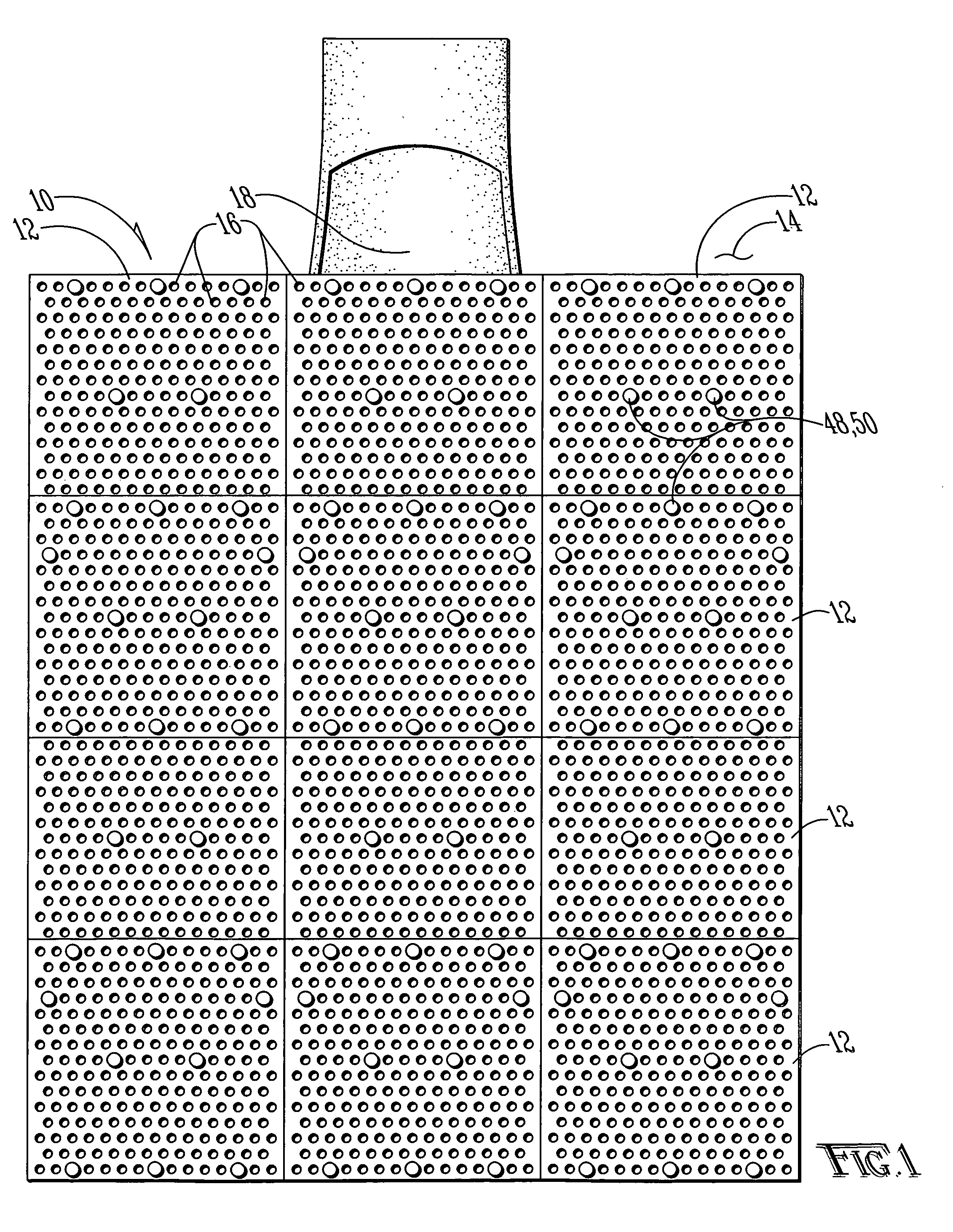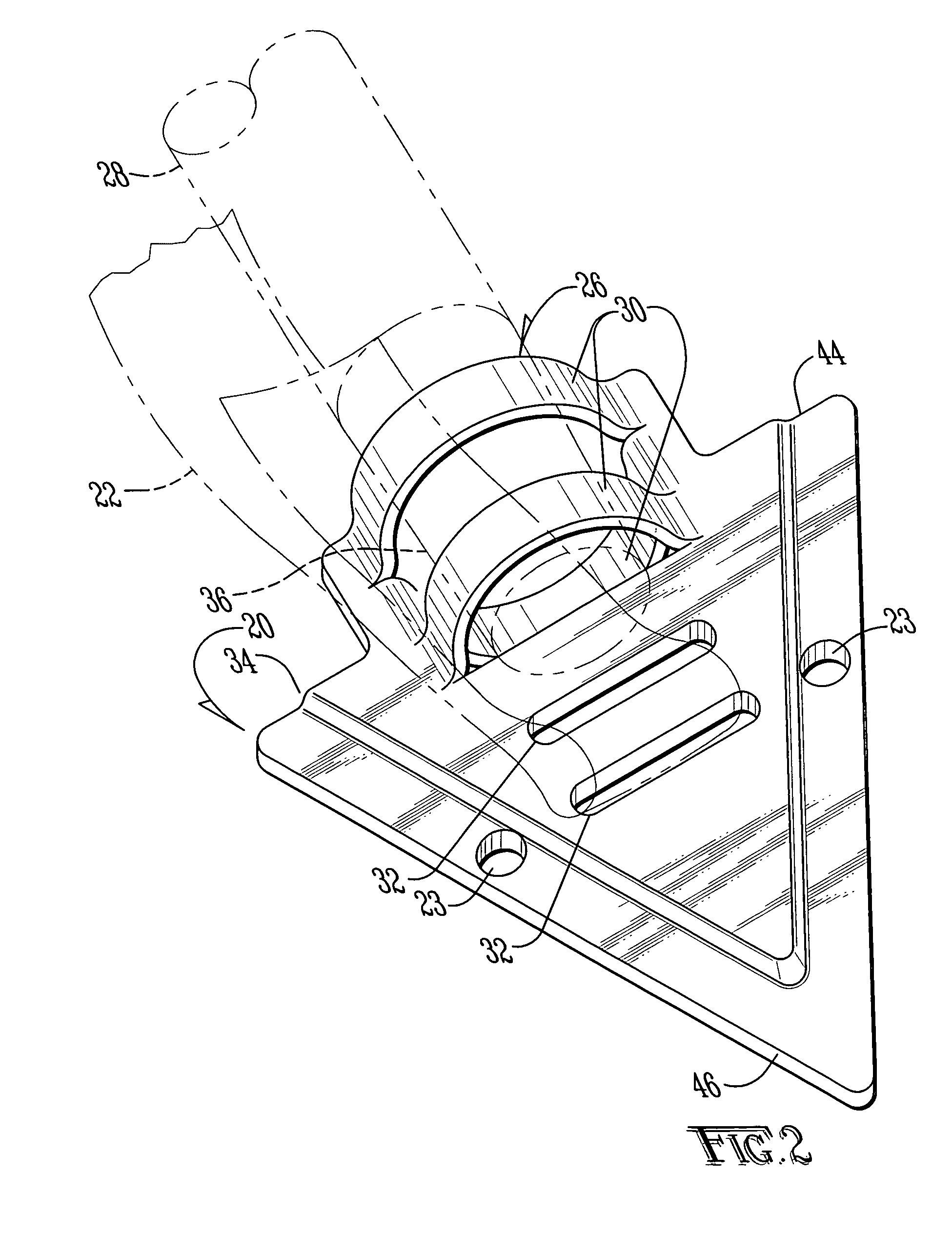Erosion control mat anchor system
a technology of erosion control and anchoring system, which is applied in mining structures, excavation, foundation engineering, etc., can solve the problems of high erosive erosive at storm water pipe outlets and the like used to divert water runoff, high economic, physical and logistical problems, and high erosive soil area adjacent to such discharge points, and achieve low cost manufacturing
- Summary
- Abstract
- Description
- Claims
- Application Information
AI Technical Summary
Benefits of technology
Problems solved by technology
Method used
Image
Examples
Embodiment Construction
[0026]An erosion control mat anchor system according to this invention is shown generally as (10) in FIG. 1. A plurality of the systems (10) are shown securing a plurality of erosion control transition mats (12), such as those described in U.S. Letters Pat. No. 6,951,438, which is incorporated herein by this reference. The system (10) may, of course, be used in association with any type of erosion control surface, such as plastic sheeting, canvas, sod, a turf reinforcement mat, or any other erosion control surface. As shown, the anchor system (10) of the present invention is used to secure the erosion control mats (12) in an overlapped relationship. The anchor systems (10) provided at the upstream and downstream portions of the erosion control transition mats (12) extend through two erosion control transitions mats (12) tying them together, as well as securing them over the erosion susceptible surface (14), such as dirt, sod or secondary erosion control surface such as a turf reinfo...
PUM
 Login to View More
Login to View More Abstract
Description
Claims
Application Information
 Login to View More
Login to View More - R&D
- Intellectual Property
- Life Sciences
- Materials
- Tech Scout
- Unparalleled Data Quality
- Higher Quality Content
- 60% Fewer Hallucinations
Browse by: Latest US Patents, China's latest patents, Technical Efficacy Thesaurus, Application Domain, Technology Topic, Popular Technical Reports.
© 2025 PatSnap. All rights reserved.Legal|Privacy policy|Modern Slavery Act Transparency Statement|Sitemap|About US| Contact US: help@patsnap.com



